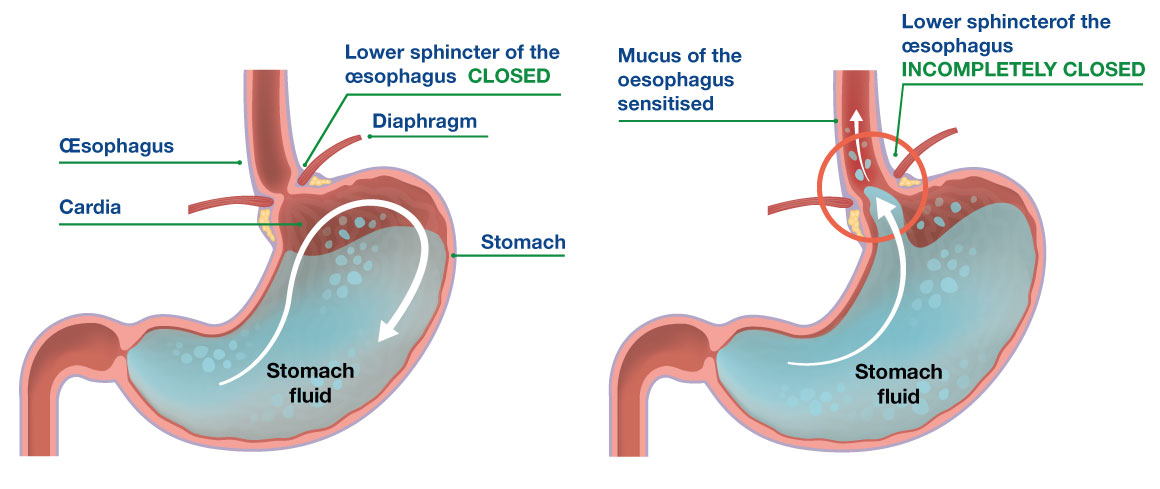What is stomach acid for?
In France, 6 million people[1] are affected by acid reflux. Why does it occur and what simple healthy lifestyle advice can you follow?

In France, 6 million people[1] are affected by acid reflux. Why does it occur and what simple healthy lifestyle advice can you follow?
To break down food and stimulate digestive enzymes, the stomach produces a large amount of hydrochloric acid. Its pH (the unit of measurement of acidity) is between 1 and 3 while the neutral pH is set at 7. This shows how unique this particular microbiota is!
Of course, the mucous membrane of the stomach is protected from this acidity by a specific mucus composed of bicarbonates, which neutralise the effects of the acidity.
This acid level also explains why the stomach is hermetically separated from the oesophagus by a sphincter preventing acid reflux.

cases, the sphincter barrier may be less effective. Part of the stomach contents enter the oesophagus, sometimes reaching the throat and mouth. Unlike the membrane of the stomach, the membranes of these organs are not coated with the same protective mucus. They can become sensitised by the presence of acid from the stomach or bile passing through the stomach[2-3-4].
The causes of acid reflux can be simple reactions to mechanical compression such as wearing too tight clothing, bending over or lying down, or pregnancy. Stress also affects the digestive ecosystem[5-6].
Simple steps can be taken to prevent acid reflux and stop it coming back:
Bibliographic references